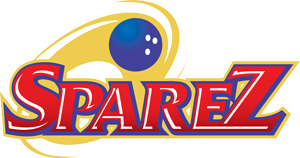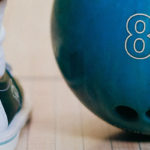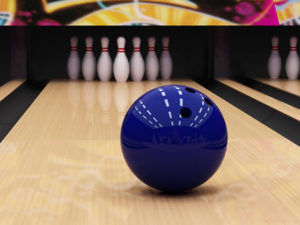
Source: Beginner Bowling Tips
Even though bowling scoring is almost always done automatically by an electronic system, it’s still necessary to learn the fundamentals of how it’s done. You should have a general understanding of all the numbers and symbols on the screen, and you should be able to calculate what is needed to reach a certain score or beat an opponent when you’re in the middle of a game. This article will teach you all about keeping a bowling score.
The Basics of Bowling Scoring
A game of bowling consists of 10 frames, each with two opportunities to knock down the pins (except for the final frame). The best possible score you can get is 300, which is known as a perfect game.
If you topple all 10 pins on the first try; this is known as a strike, and your turn is over. If you take two throws to knock down all 10 pins, it is called a spare.
On a scoresheet, you will see 10 big boxes on a horizontal line next to your name. These represent the 10 frames. You will also see a smaller box in the right-hand corner of each large one.
The number of pins knocked down on the first throw is written in the space to the left of this small box, while the number knocked down on the second throw goes in the box. The diagram on the right is an example where a bowler knocked down 6 pins on the first throw and 3 on the second, for a total of 9 pins for the frame, which is found in the middle of the large box.
How to Score Strikes and Spares
On the scoresheet, a strike is marked with an X and a spare is denoted by a / symbol. The reason these are especially valuable for high scores is that you get to add on pins from the next frame to the 10 that you just knocked down. Let me explain how this works.
A spare counts as 10 pins plus the number of pins knocked down on your next throw. (In other words, your score isn’t actually recorded until you have moved on to the next frame.) So if you get a spare and then a 6 on the first ball of the next frame, your spare will be counted as 16.
For a strike, it’s even better, as you add the value of the next two rolls to the 10 pins. For example, if you get a strike and then bowl a 6 and a 3 on the next frame, it will count as 19. The absolute best score you can get in a frame is 30, which would require you to bowl two more strikes on your subsequent rolls. Because of this, bowling a few strikes in a row will have a huge impact on your score.
Check out the example below of the first 4 frames of a game of bowling and see if you can follow along.
The 10th and final frame is the only one where you’ll see something different, as there are three small boxes. If you bowl a strike or a spare, you get the benefit of a bonus shot. If you bowl a strike on your first shot of the 10th, you get two additional shots, and if you bowl a spare, you get one.
Other Symbols Used in Bowling Scoring
There are a couple of other symbols you’ll encounter on a bowling scoresheet.
If you leave a split, which is a setup of multiple pins with a gap in between them, it will be marked on the scoresheet with a circle surrounding the number of pins you knocked down (see right).
Any throw that does not knock down any pins will be denoted by a dash (see right).
Finally, a foul line infraction (stepping over the line when making your throw) will be marked with an F and any pins knocked down will not be counted.
Does this answer all your questions about bowling scoring? If not, be sure to leave a comment and we’ll get back to you right away.






